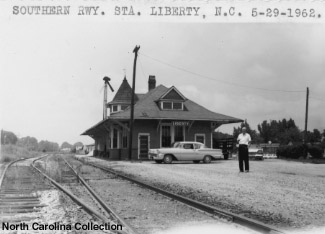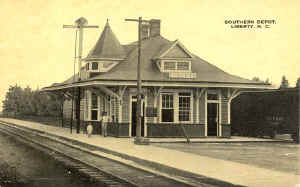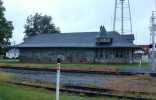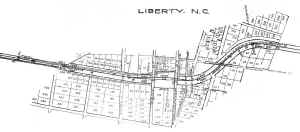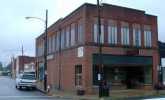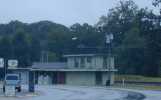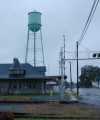Liberty (Milepost CF 92.7)
History
Liberty, altitude 790 feet, is a town in northeast Randolph County. It was incorporated January 30, 1889 and was named for the nearby plantation of John Leak who settled there in 1807. The area was first occupied by the Catawba Indians, a branch of the eastern Sioux tribe. During pre-Revolutionary War days, German, Scotch-Irish and English colonists settled in this area. Early references to a town called "Liberty" are mentioned in land transactions in the year 1809 to be found in preserved official records on file at Randolph County Courthouse in Asheboro. It is because of these findings that Liberty's town seal bears a picture of the "Liberty Oak" and has 1809 as a founding date, although the charter date is 1889. A rich part of Liberty's history is contained in the educational life of the community. As early as 1886 the Liberty Academy began operation. The school was supported by tuition paid by the students. At this time Liberty was known as an educational center and farming community. The railroad was the vital link that turned Liberty into a town, and the Cape Fear & Yadkin Valley Railway in its 1889 publication referred to Liberty as a place "where many contemplated and actual improvements evince a spirit of progress and enterprise. A fine school is established here, which for discipline and curriculum of study has already taken high rank among educational institutions of that section." You can learn more about the town at the Liberty official web site.
Track Diagram
Industries
A Southern Railway Shippers Guide from 1916 listed fourteen industries in Liberty using the A&Y for delivering and receiving products by rail (although some may have used the station or team track rather than having a dedicated siding). The ICC valuation map depicts the location of the Liberty Chair Company. I will add other industries as I receive information about them.
Industry Goods Shipped/Rec'd
Company Name
brick factory bricks Liberty Brick Co. cotton gin cotton Home Lumber Co. flour and grist mill feed Liberty Feed Co. flour and grist mill feed and flour Liberty Milling Co. grain and hay dealer grain Liberty Milling Co. harness factory harnesses J. A. Kirkman livestock miscellaneous Wade Hardin sawmill oak and pine R. D. Patterson sawmill oak and pine B. J. Gregson sawmill oak and pine A. M. Fogleman sawmill oak and pine Staley Lumber Co. sawmill oak and pine Home Lumber Co. sawmill oak and pine Foster & Pickett Lumber Co. woodworking factory picker sticks Liberty Picker Stick & Novelty Co.
Odds and Ends
Here I will include any information that is non-railroad in nature that helps provide a hint as to the character of the people and industries who lived and worked in Liberty. I welcome any and all information about this former A&Y community!
